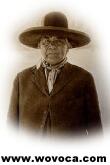Click on image to purchase from amazon.com
[From:
Nostradamus:
The New Revelations by Blue Otter's friend
John Hogue]
Michel de Nostradame was born on December 14, 1503 at St. Remy in Provence,
France to a family of
"Christianized" Jews.
He was taught a wide range of subjects by both his grandfathers. By the time
that Michel began his formal education in Avignon, where he learned philosophy,
grammar, and rhetoric, he was already well versed in classical literature,
history, medicine, astrology (then a legitimate science), and herbal and
folk medicine.
Nostradamus (the Latin version of his name) first became well known due
to his novel and very successful treatment of bubonic plague, the infamous
Black Death that ravaged France in the early 16th century. His innovative
cure consisted basically of cleanliness and vitamin C. The first step when
he entered a village was to have all of the corpses removed from the streets.
He then prescribed for his patients plenty of fresh air, unpolluted water,
and his "Rose Pills," which consisted of rose petals (and, perhaps, rose
hips), sawdust from green cypress, iris, cloves, calamus, and lign-aloes.
He did not allow his patients to suffer "bleeding," then a popular, although
futile, treatment for everything from a minor cold to the Great Plague. He
truly was successful in combating a disease for which there appeared to be
no cure and no relief. It is estimated that over one-quarter of the entire
population of Europe was killed by the Black Death during its sporadic
visits.
In 1537, plague struck Agen, where Nostradamus was living with his wife
and two children. He confidently began to treat his fellow citizens but,
unfortunately, was unable to save his family from his old enemy. Distraught
and questioning his own abilities, Nostradamus began to wander through Europe
aimlessly for the next six years. It was during this time that he first became
aware of the awakening of his prophetic powers.
When plague broke out in Aix, capital of Provence, for nine months
Nostradamus again applied his proven skills to save as many of the populace
as possible. After the plague dissipated, the city showed its gratitude by
bestowing upon him a pension for life.
Ten years after the death of his wife and children, Nostradamus settled
in Salon and remarried, eventually fathering three daughters and three sons.
He had the upper floor of his house transformed into a private study, where
he installed his magical equipment: astrolabe, magic mirrors, divining rods,
and a brass bowl and tripod, designed after the type used by the great Delphic
oracles.
Under cover of night, he would retire to his study where he would sit
before the tripod upon which simmered the brass bowl filled with water and
pungent herbs (probably bay laurel or a combination of herbs). For a few
years, Nostradamus struggled with the dilemma of whether he should make his
findings public. In 1550, he published his first almanac of prophecies --
twelve four-line poems called "quatrains." Each quatrain gave a general prophecy
for the coming year. The acclaim that he received due to the almanac encouraged
Nostradamus to continue. He produced an almanac every year for the rest of
his life.
His most famous work, The Centuries, was begun in 1554. Eventually
these prophecies were to consist of ten volumes of 100 quatrains each. Centuries
1 through part of 4 were published in Lyons in 1555. The remainder of 4 and
the subsequent Centuries through 7 were published later that same year. The
last three were printed in 1558, but Nostradamus decided not to have them
widely distributed. The Centuries have remained constantly in print
for over 400 years.
In his own time as is true today, Nostradamus' quatrains have received
mixed responses. The combination of French, Provencal, Greek, Latin, and
Italian written as riddles, puns, anagrams, and epigrams are complex and
demand that the potential interpreter have knowledge in a wide range of subjects.
Many people from the 16th century through modern times have been enthralled
by the prophecies and have tried to make sense of them. Some quatrains could
fit descriptions of just about any era. Others are more exact, and it is
those quatrains that have established the well-earned reputation of Nostradamus
as one of the world's greatest prophets.
To the ignorant, closed mind, Nostradamus was a creature of the devil,
babbling in cryptic, evil verse. From philosophers, Nostradamus continues
to draw praise and curses. Poets remain perplexed by the meaning of his wild
verses. Interpretation is open to all. Except for those prophecies that were
fulfilled in his own time and acknowledged by the prophet himself, no one
can give a final, definite interpretation to any of the prophecies that have
yet to be fulfilled. This is an area that is open to individual, solitary
study. Perhaps that was the intent.
According to witnesses, Nostradamus stayed alert to the end of his life,
even though he was in great pain caused by arthritis, gout and dropsy. When
his assistant wished him goodnight on July 1, 1566, Nostradamus replied,
"You will not find me alive at sunrise."
As one might expect, he had predicted his own death. In his last almanac,
Nostradamus had written:
On his return from the Embassy, the King's gift put in place,
He will do nothing more. He will be gone to God.
Close relatives, friends, brothers by blood (will find him)
Completely dead near the bed and the bench.
On the morning of July 2, the assistant escorted family and friends to
the study, where Nostradamus had spent the previous night. They found his
body on the floor between the bed and a bench that he had placed there for
aid in getting out of bed.
His wife carried out his last wishes, that he be interred standing upright
and that his coffin be enclosed within the walls of the Church of the Cordeliers
of Salon. The translation from Latin of the inscription on his tomb reads:
"Here rest the bones of the illustrious Michel Nostradamus, alone of all
mortals, judged worthy to record with his near divine pen, under the influence
of the stars, the future events of the entire world. He lived sixty-two years,
six months and seventeen days. He died at Salon the in year 1566. Let not
posterity disturb his rest. Anne Posart Gemelle wishes her husband true
happiness."
See
Desecration
of Nostradamus' Tomb.













![[Image]](pict41.jpg)
![[Image]](pict43.jpg)